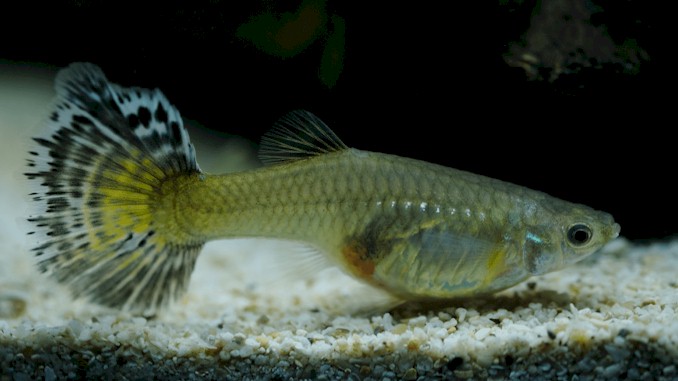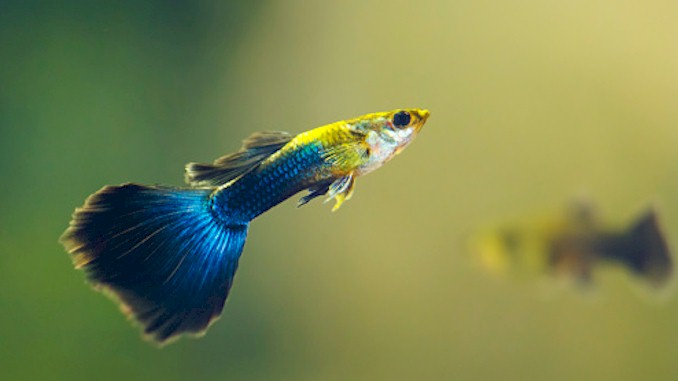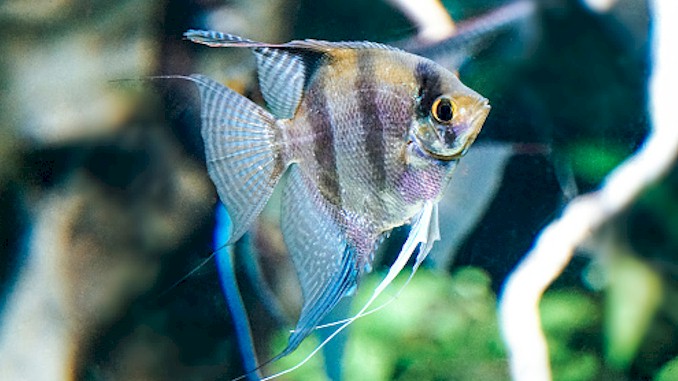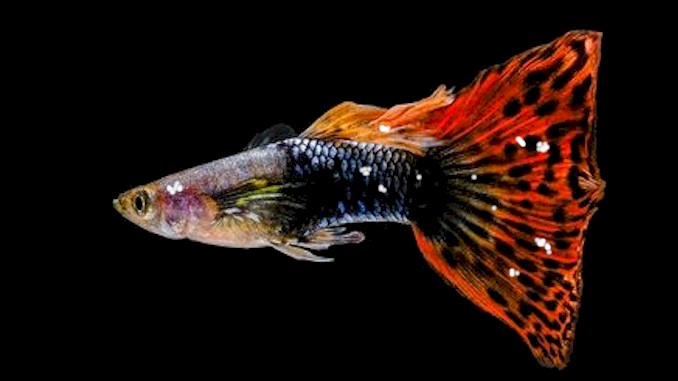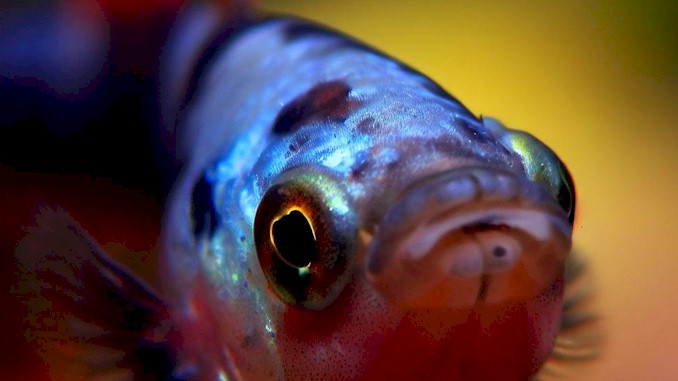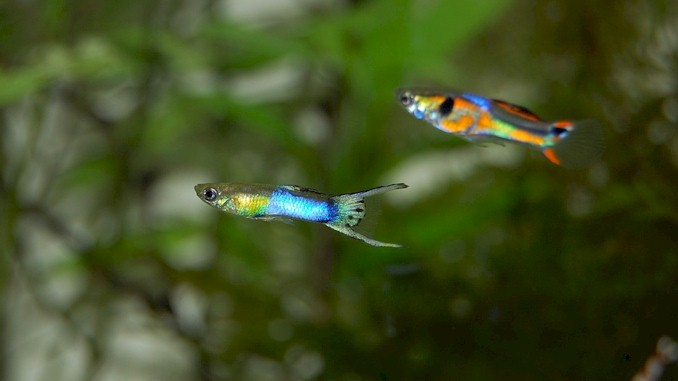Guppy Tail Drooping and Bent Spine: Reasons and Solutions
Seeing an ill fish in my tank, with a drooping tail and a bent appearance, worried me about the situation spreading. To prevent potential issues, I conducted extensive research to identify the root cause, including water quality, diet, and parasites. Actually, I have learned a lot from how to deal with this situation. That’s why I want to share all that with you, the guppies owners like me. Then, you could get the points quickly and take action immediately when faced with such issues to prevent further damage to your aquatic ecosystem.
Guppy tail drooping and bent spine are common signs of fish tuberculosis (TB), a bacterial infection that affects the skeletal system and internal organs of guppies. Other factors that can contribute to this condition include high ammonia, nitrates, and nitrites levels in the water, which can damage the gills and kidneys of guppies; and scoliosis, a genetic disorder that causes abnormal curvature of the spine in some fish.
Now you know the common reasons that cause your guppies to look bad and worry you. You should take action immediately, either call your vet or treat them yourself. In either case, you should understand what the problems are, and if there are any options you could take to deal with them. Don’t worry, I’m here to provide you with the information and knowledge needed to do the job. Read on to get them:
What is Guppy Tail Drooping and Bent Spine?
Guppy tail drooping and bent spine are conditions that affect the appearance and health of guppies. They can be caused by various factors, such as environmental stress, old age, pregnancy, injury, or disease. Depending on the cause, guppy tail drooping and bent spine can be temporary or permanent, mild or severe.
Guppy tail drooping refers to the situation where the guppy’s tail fin hangs down instead of being spread out horizontally. This can make the guppy look sad or sick. And, guppy bent spine refers to the situation where the guppy’s backbone curves abnormally, making the fish look crooked or broken.
Both conditions can impair the guppy’s ability to swim properly and may affect their breathing, digestion, reproduction, and immunity. Guppies with tail drooping and bent spine may also become more vulnerable to predators and aggressive tank mates.
Guppy tail drooping and bent spine are not diseases by themselves but rather symptoms of underlying problems that need to be identified and treated accordingly. In some cases, guppies may recover from these conditions with proper care and medication. In other cases, guppies may have to live with these conditions for the rest of their lives.
What are the Symptoms of Guppy Tail Drooping and Bent Spine?
Guppy tail drooping and bent spine can be easily recognized by observing your guppies closely. The main symptom is a downward curve of the tail fin that makes it look limp and saggy. The tail may also lose its color and become pale or transparent.
The bent spine can be seen as an abnormal curvature of the backbone that makes the guppy look crooked or broken. The bend can occur anywhere along the spine, but it is more common near the tail or head. The bend may also affect the shape of the body, making it look swollen or thin.
Depending on the cause of these conditions, guppies may also show other symptoms that indicate their health status. Some of these symptoms include:
- Loss of appetite: Guppies with tail drooping and bent spine may lose interest in food and become weak and lethargic.
- Folding fins: Guppies with tail drooping and bent spine may fold their fins close to their body instead of spreading them out normally. This can indicate stress or pain.
- Protruding eyes: Guppies with tail drooping and bent spine may develop protruding eyes that bulge out of their sockets. This can indicate an infection or internal pressure.
- Scanty scales: Guppies with tail drooping and bent spine may lose some of their scales or have gaps between them. This can indicate poor water quality or malnutrition.
- Sparse scales: Guppies with tail drooping and bent spine may have sparse scales that do not cover their body fully. This can indicate a genetic disorder or a parasite infestation.
- Tinting of colors: Guppies with tail drooping and bent spine may change their coloration to become darker or lighter than usual. This can indicate stress, disease, or aging.
- Pleating fins: Guppies with tail drooping and bent spine may have pleated fins that look wrinkled or folded. This can indicate a bacterial infection or a fungal infection.
If you notice any of these symptoms in your guppies, you should take action immediately to diagnose the cause and treat it accordingly. Ignoring these symptoms could lead to further complications and even death for your guppies.
Why Is My Guppy’s Tail Drooping and Seems Broken?
Guppy tail drooping and bent spine can have various causes that can be classified into two categories: environmental and biological. Environmental causes are related to the external factors that affect the guppy’s living conditions, such as water quality, temperature, pH, hardness, etc. Biological causes are related to the internal factors that affect the guppy’s health, such as genetics, diseases, injuries, etc.
Some potential sources of curved spines and drooping tails in guppies include:
1. Stressing Environment
Stress is one of the main environmental causes of guppy tail drooping and bent spine. Stress can be caused by poor water quality, high levels of ammonia, nitrites, or nitrates, overcrowding, inadequate tank size, incompatible tank mates, sudden changes in water parameters or temperature, etc. Stress can weaken the guppy’s immune system and make it more susceptible to infections and diseases. It can also affect the guppy’s behavior and appetite.
2. Old Age
Old age is another environmental cause of guppy tail drooping and bent spine. As guppies age, their bones may become weaker and more brittle due to mineral deficiency or natural wear and tear. This can result in a curved back that affects their posture and swimming ability. Old age can also affect the guppy’s coloration and vitality.
3. Pregnancy
Pregnancy is a biological cause of guppy tail drooping and bent spine that affects female guppies only. Guppies are livebearers that give birth to live fry instead of laying eggs. During pregnancy, female guppies may develop a gravid spot near their anal fin that indicates they are carrying fry inside their abdomen. The gravid spot may become darker as the pregnancy progresses. The weight of the fry may put pressure on the female guppy’s back and cause it to bend downwards. This condition usually resolves after giving birth.
4. Scoliosis
Scoliosis is a biological cause of guppy tail drooping and bent spine that affects both male and female guppies. Scoliosis is a genetic disorder that causes an abnormal curvature of the spine in an S-shape or C-shape. Scoliosis can be inherited from parents or caused by mutations during development. Scoliosis can affect the guppy’s appearance, swimming ability, digestion, reproduction, and lifespan.
5. Tuberculosis
Tuberculosis is a biological cause of guppy tail drooping and bent spine that affects both male and female guppies. Tuberculosis is a bacterial infection caused by various species of Mycobacterium bacteria that can infect fish through water contact or ingestion of contaminated food or waste products from infected fish. Tuberculosis can affect various organs in fish such as kidneys liver spleen intestines skin eyes etc but it mainly targets their skeletal system causing inflammation erosion deformity necrosis etc This can result in a curved back that makes them look broken Tuberculosis is difficult to treat with antibiotics often fatal for fish
6. Direct Injury
Direct injury is another biological cause of guppy tail drooping and bent spine that affects both male and female guppies Direct injury can be caused by physical trauma such as bites scratches cuts burns etc from predators aggressive tank mates sharp objects decorations etc Direct injury can damage the muscles tendons ligaments nerves blood vessels bones etc around the affected area causing pain swelling inflammation infection bleeding bruising etc This can result in a curved back that impairs their movement Direct injury may heal over time with proper care or leave permanent scars
These are some of the most common causes of guppy tail drooping and bent spine, but there may be other rare or unknown causes as well. Therefore it is important to monitor your guppies regularly for any signs of these conditions, diagnose them accurately, treat them effectively, prevent them from occurring again.
How to Treat a Guppy With a Bent Spine and a Drooping Tail
Guppy tail drooping and bent spine can be challenging to treat, especially if they are caused by genetic or chronic diseases. However, there are some steps that you can take to improve your guppy’s condition and reduce their suffering. The treatment will depend on the cause of the problem, so you need to diagnose it accurately before applying any medication or intervention.
Some of the possible treatments for guppy tail drooping and bent spine are:
1. Tuberculosis
If you suspect that your guppy is suffering from fish TB, it’s crucial to take immediate action to prevent the disease from spreading to other fish in the tank. Fortunately, antibiotics such as isoniazid, neomycin, doxycycline, minocycline, and rifampin can help fight this disease. However, it’s important to note that the probability of these drugs working is relatively low. As a result, many experts recommend quarantining the infected fish and looking for ways to humanely euthanize it.
Here are some actions you can take:
- Move the infected guppy to a separate hospital tank with clean water and a heater.
- Add salt (1 teaspoon per gallon) and vitamin C (250 mg per gallon) to their water. These substances can help inhibit the bacteria’s growth and boost their immune system.
- Increase the water temperature gradually up to 86°F over several days. This can help kill some of the bacteria but also stress your fish so monitor them carefully.
- Consult a veterinarian who specializes in fish diseases. They may prescribe antibiotics such as erythromycin, rifampin, tetracycline, azithromycin, or doxycycline to treat the infection. Follow their instructions carefully and complete the full course of treatment.
2. Scoliosis
If scoliosis is the cause of your guppy’s tail drooping and bent spine, you need to accept that there is no cure for this condition. However, you can still manage it by providing your guppy with proper care and comfort. This may include:
- Keeping them in a separate tank or a breeding box away from other fish that may bully, harass, or injure them due to their deformity;
- Feeding them soft foods that are easy swallow digest, such as flakes, pellets, bloodworms, etc.;
- Adding supplements such as vitamins minerals calcium, etc., to enhance their health;
- Maintain good water quality by performing regular water changes;
- Adding some aquarium salt (1 teaspoon per gallon) prevent infections reduce inflammation monitor their health closely any signs disease infection.
3. Stress
If stress is the cause of your guppy’s tail drooping and bent spine, you need to eliminate the source of stress and provide a comfortable environment for your fish. This may include:
- Improving the water quality by performing regular water changes, testing and adjusting the water parameters such as ammonia, nitrites, nitrates, pH, hardness, etc.,
- Adding a filter or an air pump to increase oxygenation and circulation;
- Reducing overcrowding by removing excess fish or upgrading to a larger tank;
- Choosing compatible tank mates that won’t harass or bully your guppy;
- Avoiding sudden changes in temperature or lighting by using a heater or a timer;
- Providing hiding places and plants for your guppy to feel safe and secure;
- Feeding your guppy a balanced diet with enough variety and nutrients;
- You can also add some aquarium salt (1 teaspoon per gallon) to help your guppy cope with stress and prevent infections.
If your fish tank is too small this is a great fish tank you could use. It may not be big enough depending on how many guppies you have, but it’s best one I could find. You can buy it from Amazon by clicking the link (aka button).


Glofish Aquarium Kit Fish Tank
4. Old age
If old age is the cause of your guppy’s tail drooping and bent spine, there is not much you can do to reverse it. However, you can still make your guppy’s life easier by providing them with optimal care and comfort. This may include:
- Keeping them in a separate tank or a breeding box away from younger or more active fish, which may stress them out or compete with them for food or space;
- Feeding them soft foods that are easy to digest, such as flakes pellets, bloodworms, etc.;
- Adding supplements such as vitamins minerals calcium, etc. to strengthen their bones;
- Maintaining good water quality by performing regular water changes;
- Adding some aquarium salt (1 teaspoon per gallon) to help them deal with osmotic pressure; monitoring their health closely for any signs of disease or infection.
5. Pregnancy
If pregnancy is the cause of your female guppy’s tail drooping and bent spine, you need to prepare for her delivery and provide her with adequate care before, during after giving birth.
This may include:
- Moving her to a separate tank or a breeding box where she can rest peacefully without being disturbed by other fish;
- Adding some live plants, such as java moss hornwort, etc. that can provide shelter cover oxygen for her fry;
- Feeding her high-quality foods rich in protein such as brine shrimp daphnia tubifex, etc., that can support her energy needs growth development of her fry;
- Adding some aquarium salt (1 teaspoon per gallon) to prevent infections reduce swelling ease labor pains;
- Watching for signs of labor such as rapid breathing darkening gravid spot increased activity, etc.;
- Removing her from the breeding box after she gives birth if she shows signs of aggression towards her fry.
6. Salt the Water
As you can see, when you deal with some problems that cause your guppies tail drooping and bent spine, there is always an option that is using aquarium salt. Though when you’re dealing with a fish that has tuberculosis, salt won’t be of much use. Nonetheless, it’s an effective treatment for various other ailments and can even serve as a preventive measure. Additionally, salt can enhance the efficacy of drugs against bacteria and parasites.
To treat your sick fish, the most effective approach is to isolate them in a hospital tank. Adding one tablespoon of salt to each gallon of water in the tank is recommended (going overboard with salt might dehydrate your guppies). For optimal results, try using the API Aquarium Salt. You can buy it from Amazon with the link below:
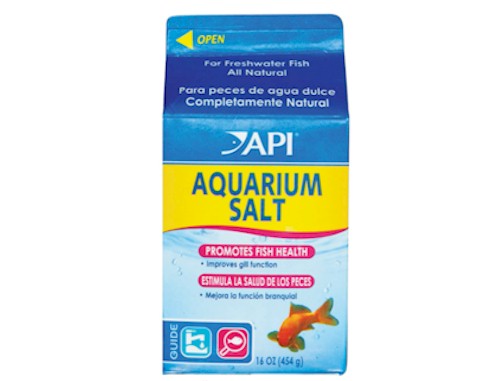

API Aquarium Salt
PLUS, it’s super cheap!
How to Prevent Guppy Tail Drooping and Bent Spine?
Guppies are beautiful and colorful fish that can brighten up any aquarium. However, they can also suffer from various health problems that can affect their appearance and well-being. One of these problems is tail drooping and bent spine, which can make your guppy look sickly and unhappy.
Tail drooping and bent spine are not diseases by themselves, but rather symptoms of other underlying issues. They can have different causes, such as stress, old age, pregnancy, injury, or infection. Some of these causes are preventable and treatable, while others are not.
In this article, I will explain how to prevent guppy tail drooping and bent spine by following three simple steps: quarantine new fish, maintain good water quality, and avoid inbreeding.
Quarantine New Fish
One of the most common causes of tail drooping and bent spine in guppies is infection by bacteria or parasites. These pathogens can enter your tank through new fish that you add without proper quarantine. Some of these infections are contagious and can spread quickly among your guppy population.
One of the most notorious infections that can cause tail drooping and bent spine in guppies is tuberculosis (TB). This is caused by a bacterium called Mycobacterium marinum, which can also infect humans through skin contact with infected fish or water.
To prevent introducing any infection into your tank, you should always quarantine new fish for at least two weeks before adding them to your main tank. Quarantine means keeping them in a separate tank with clean water and a heater. You should also observe them closely for any signs of illness or abnormal behavior.
If you notice any symptoms of TB or other infections in your new fish during quarantine, such as weight loss, lesions on the body or head, deformities along the spine, dropsy (swelling of the abdomen), ulcers on the flanks, etc., you should consult a veterinarian who specializes in fish diseases.
They may prescribe antibiotics or other medications to treat the infection. You should follow their instructions carefully and complete the full course of treatment. Do not add any infected fish to your main tank until they are fully cured.
Maintain Good Water Quality
Another common cause of tail drooping and bent spine in guppies is stress. Stress can weaken your guppy’s immune system and make them more susceptible to infections and diseases. Stress can also affect their bones and muscles over time.
One of the main sources of stress for guppies is poor water quality. If your water parameters are not optimal for your guppies’ needs, they will suffer from various problems such as ammonia poisoning, nitrite poisoning, nitrate poisoning, pH imbalance, low oxygen levels, etc.[ Some signs that indicate poor water quality include cloudy water, algae growth, foul odor, fish gasping at the surface, fish hiding or darting around nervously, etc.[
To maintain good water quality for your guppies,
- You should test your water regularly with a reliable test kit, you can click the link I provide below to examine the one I always used on Amazon.
- You should change 25% of the water every week with dechlorinated water
- You should use a filter that can remove waste and debris efficiently
- You should avoid overfeeding or underfeeding your guppies
- You should avoid overcrowding your tank or keeping incompatible species together
- You should provide enough space and hiding places for your guppies
- You should keep a stable water temperature between 75°F and 82°F
By following these steps, you will ensure that your guppies have a healthy environment where they can thrive without stress.
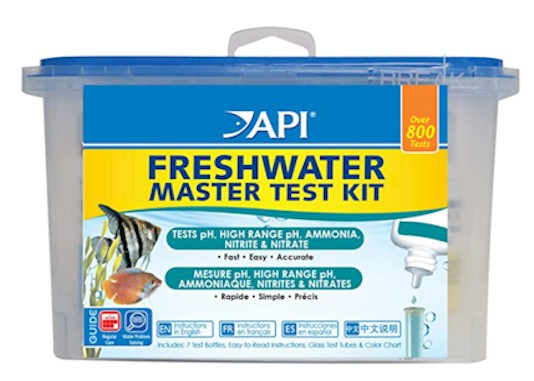

API Freshwater Master Test Kit
Avoid Inbreeding
A third cause of tail drooping and bent spine in guppies is genetic defects due to inbreeding. Inbreeding means mating closely related individuals, such as siblings, parents, or offspring.
Inbreeding increases the risk of passing on harmful genes that may cause physical deformities, such as curved spines, or other health issues, such as reduced immunity, lower fertility, shorter lifespan, etc.[
Inbreeding is common among commercial breeders who want to produce specific traits or colors in their guppies. However, this practice comes at a cost for the overall health and diversity of the species.
To avoid inbreeding among your guppies, you should introduce new bloodlines to your tank every once in a while. You can buy new guppies from reputable sources or swap them with other hobbyists who have different bloodlines. This way, you can increase the genetic diversity and reduce the risk of defects and diseases.
However, you should always quarantine new fish before adding them to your main tank to prevent introducing any infections or parasites. You should also avoid mixing guppies that have very different traits or colors, as this may result in undesirable offspring.
Another option is to keep only males or only females in your tank. This will prevent any breeding at all and eliminate the need for culling unwanted fry. However, this may also affect the social behavior and dynamics of your guppies, as they may become more aggressive or less active without mates.
If you want to keep both sexes but limit their breeding, you can use a divider to separate them in your tank. You can also use plants, decorations, or floating breeders to provide hiding places for females who want to escape male harassment. You can also remove pregnant females from the tank before they give birth and return them after they release their fry.
Related Questions:
Is Guppy Tail Drooping and Bent Spine Contagious? According to some sources, guppies’ tails may droop due to environmental factors, such as high ammonia, nitrates, and nitrites. However, guppies may also appear bent due to direct injuries or underlying diseases, such as Scoliosis and Tuberculosis. These diseases are untreatable and highly contagious, so you should isolate the affected fish from the rest of the tank as soon as possible. You should also check your water quality and make sure it is suitable for guppies.
Can Guppies with Tail Drooping and Bent Spine Live Normally? It depends on the cause of the tail drooping and bent spine. If it is due to environmental factors, such as high ammonia, nitrates, and nitrites, then improving the water quality may help your guppy recover its normal shape and behavior. If it is due to old age, then there is little you can do about it, but most guppy fish with a permanently bent spine go on to lead a normal life. However, if it is due to diseases such as Scoliosis and Tuberculosis, then your guppy may not live normally. These diseases are untreatable and can affect your guppy’s swimming ability, appetite, breathing, and immunity. You should isolate the affected fish from the rest of the tank and provide supportive care as much as possible.
How Common is Guppy Tail Drooping and Bent Spine? Guppy tail drooping and bent spine are relatively common health issues among guppies. While guppy tail drooping and bent spine are common among guppies, they are not normal. If you notice any of these symptoms in your fish, it’s best to take action immediately and seek the advice of a qualified veterinarian or experienced fish keeper. Early detection and treatment can make a significant difference in the fish’s overall health and well-being.


